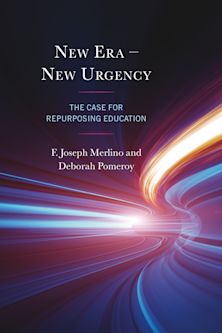- Home
- ACADEMIC
- Education
- Education Policy and Politics
- Student Activities in Today's Schools
This product is usually dispatched within 3 days
- Delivery and returns info
-
Free US delivery on orders $35 or over
You must sign in to add this item to your wishlist. Please sign in or create an account
Description
What are student activities? Why do schools have student activity groups? What are the benefits for students, schools, and communities? These are some of the questions that Student Activities in Today's Schools addresses. Klesse has reviewed relevant educational research to provide an overview of the essential learning for all youth that is available from participation. What are those benefits and who benefits? Why don't all young people participate? Are there ways to make student activity programs in schools more inclusive? What will these programs look like in 5, 10, and 15 years?
Schools must educate and develop our youth to meet the challenge of participation and survival in a global economy. The skills learned through student activities provide the foundation for adult participation as citizens of our democracy. So, how do we best prepare our young people for the future? Read this book to find out.
Table of Contents
Chapter 2 Foreword
Chapter 3 Acknowledgments
Chapter 4 Introduction
Chapter 5 1. What Are Student Activities?
Chapter 6 2. Why Do Schools Have School Activity Programs?
Chapter 7 3. What Are the Short-Term and Long Term Benefits of School Activities for Schools?
Chapter 8 4. What Are the Short-Term and Long Term Benefits of Student Activities for Schools?
Chapter 9 5. What Are the Short-Term and Long Term Benefits of Student Activities for Communities?
Chapter 10 6. What Is the Difference between Extracurricular and Cocurricular Activities?
Chapter 11 7. How Can Student Activities Fulfill Today's Standards for Learning?
Chapter 12 8. How Do Sports and Athletics Fit?
Chapter 13 9. How Are Student Activities Evaluated?
Chapter 14 10. How Are Students Involved, Especially Those Who Are Not Motivated?
Chapter 15 11. How does the School Finance a Student Activity Program Fairly and Equitably?
Chapter 16 12. What Would a School Without Student Activities Be Like?
Chapter 17 13. How Should Student Activities Be Organized for Maximum Benefit to Students and School?
Chapter 18 14. What is the Ideal versus the Typical Profile of the Teacher-Advisor to Student Activities?
Chapter 19 15. What Will Student Activity Programs Look Like in Five, Ten, or Fifteen Years?
Chapter 20 16. Legal issues and Considerations for Cocurricular Activities
Chapter 21 Appendix A: Evaluation Procedures for Student Activities
Chapter 22 Appendix B: Rules Governing Participation in Cocurricular Activities for Students-Windsor Central School District (New York)
Chapter 23 Appendix C: Athletic and Competitive Activity Policies and Procedures for District 211 (Illinois)
Chapter 24 Appendix D: Extracurricular and Cocurricular Activities-Centerburg School (Illinois)
Chapter 25 References
Chapter 26 Index
Chapter 27 About the Author
Product details
| Published | Apr 09 2004 |
|---|---|
| Format | Paperback |
| Edition | 1st |
| Extent | 260 |
| ISBN | 9781578860876 |
| Imprint | R&L Education |
| Dimensions | 11 x 8 inches |
| Series | Digital Learning Series |
| Publisher | Bloomsbury Publishing |


































